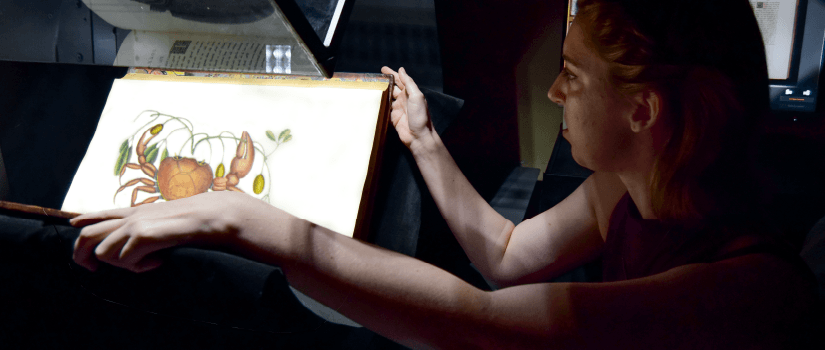If every picture tells a story, what do one million pictures have to say?
That is the question Tami Blumenfield and Cindy Garcia-Rivas, summer interns at University Libraries Digital Collections department, are trying to answer.
Both Masters in Library and Information Science students seized an opportunity to help University Libraries launch an audit of its online digital collections archive, examining it for diversity, equity, inclusivity and accessibility. The archive, which went online 17 years ago, holds more than 300 individual collections and one million digitized items including photos, letters, recorded oral histories, films and books.
“We are looking through the collections to see how well they represent the diversity of South Carolina and an inclusive approach to our shared history,” says Blumenfield, who earned a bachelors and PhD in anthropology and east Asian studies before beginning work on her masters.
“When I was looking through one collection of digitized natural history prints from the 1700s, I noted that they were created by a white, English, male botanist who explored what later became South Carolina. The text that accompanies the collection doesn’t mention that he wasn’t operating alone,” says Blumenfield. “There were native people living here that he certainly interacted with, but their voices are absent from the collection.”
Blumenfield and Garcia-Rivas take note when information like this is missing from a collection.
“We can remedy that and contextualize the materials in collections by saying ‘Here’s what happened, here’s the broader context,” she says. “Let’s think about that and honor everyone appropriately.”
Garcia-Rivas, who has a bachelors in anthropology and a masters in sociology, says they have a responsibility to take an activist approach to digital collections.
“We look at language, how we describe people and places, how we frame what people are looking at,” she says. “For example, the archive includes videos of Klan rallies and videos of arrests at civil rights protests. We really need to put that type of content into context.”
“Ideally we’d include a link to information about how and why Klan rallies took place. We have an obligation to give viewers a critical analysis of how we can think through disturbing content. We have to consider if we need to add content warnings to some of our collections that portray extreme poverty, racism, oppression or gender inequality,” she says.
Blumenfield and Garcia-Rivas are also analyzing specific words used to describe items in the collection to ensure the language is not problematic.
“Problematic language is words that are outdated, pejorative, or from the point of view of one group which offends everyone else, says Garcia-Rivas. “For example, we want to remove terms like ‘slave.’ Instead of saying ‘This is a picture of a man and his slave,’ we need to say, ‘This is picture of a man with an enslaved person,’ and include their names if we know them,” says Cindy.
Blumenfield and Garcia-Rivas are also working to get a comprehensive look at the collection as a whole to direct its future expansion.
“We have overrepresentation of certain groups, particularly white males. There’s definitely room to grow, so we’re making recommendations about how the composition of the collection should change in the future,” says Garcia-Rivas.
Digital Collections is already becoming more inclusive. For example, it anticipates adding its first LGBTQIA collection this year. But Mēgan Oliver, the Digital Collections Librarian who oversees the work of the department, wants to see much more diversity.
“I would like to see collections in other languages. I would like to focus on Gullah culture. We should have collections that represent our Asian, LatinX communities and so many others,” she says.
To build digital collections, the department partners with people and organizations statewide with content they’d like to share with the Libraries for digitization.
“We have the resources to collaborate with people to get these projects off the ground. We’re here to collaborate with everyone. We need people to come to us because we want to get their collections digitized and shared worldwide,” Oliver says.
Oliver works with historical collections daily, but does it with a keen eye on how society is constantly changing.
“Every now and then, in academia we have to look up from our narrow scope of research and check to see if we’re doing what we need to be doing. Through this audit, we’re making sure we’re moving forward with the world and telling the right story.”
